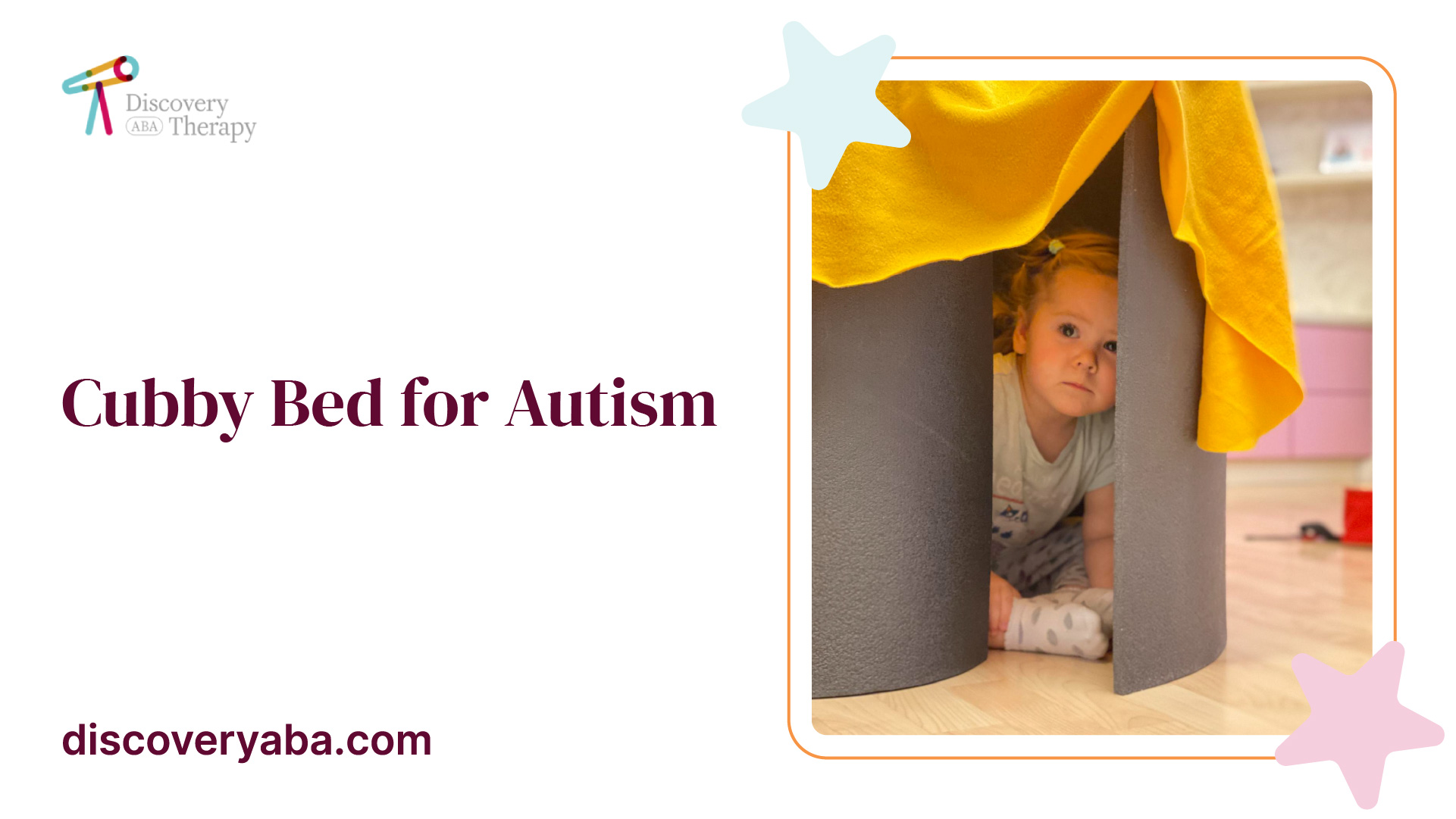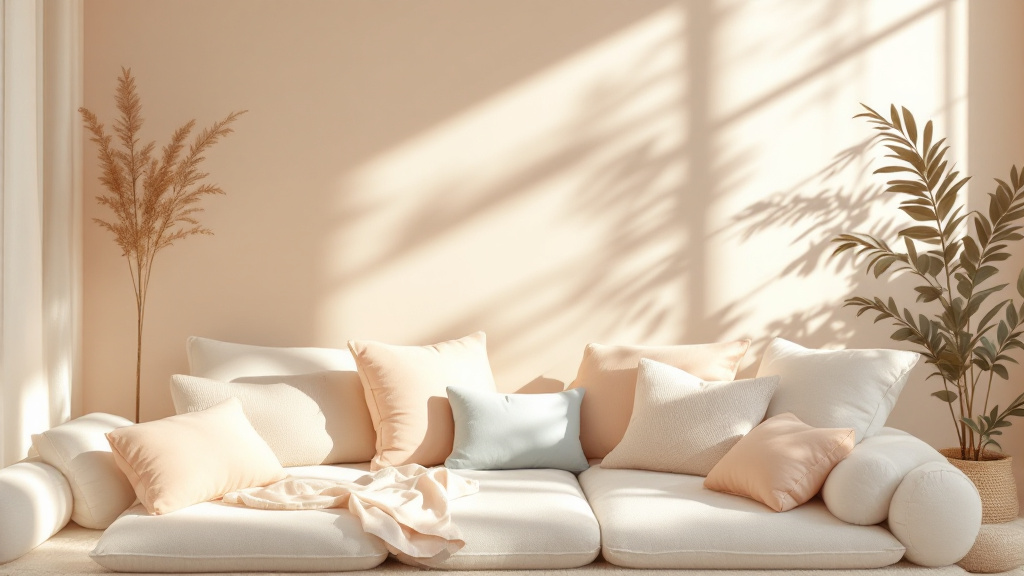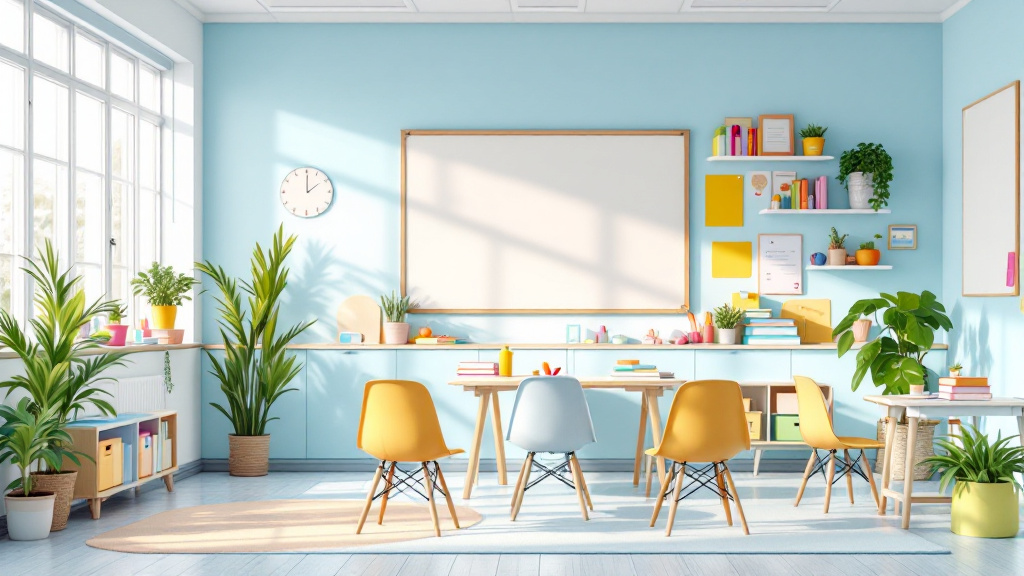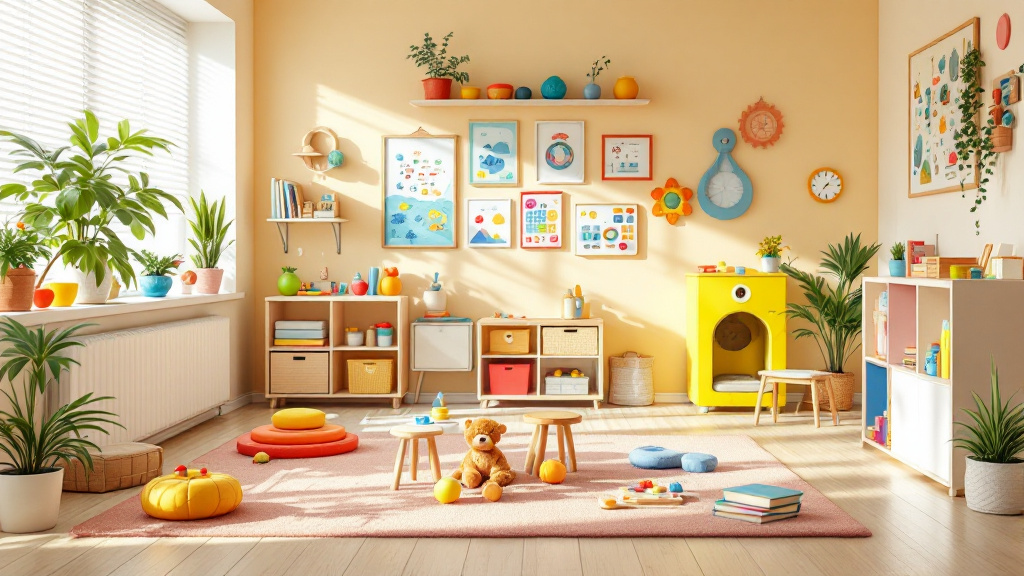Cubby Bed for Autism
Explore the benefits of a cubby bed for autism, enhancing sleep quality and providing comfort for children.


Understanding Cubby Beds
Cubby beds are specially designed to create a safe and calming sleep environment for children with autism and other special needs. They come equipped with various features that address the unique requirements of these individuals, enhancing their overall quality of life.

Purpose and Benefits
Cubby beds serve multiple purposes, providing safety, improved sleep quality, and promoting self-regulation. These beds are particularly beneficial for children who may experience anxiety, restlessness, or sensory overload. Some of the key benefits include:
The versatility of cubby beds allows them to be used by individuals of any age who experience sleep or sensory issues, although they are primarily targeted toward children. This makes them an adaptable choice for a wide range of needs.
Features Overview
Cubby beds are composed of innovative features aimed at improving the overall experience for users. Some of the notable features include:
FeatureDescriptionPadded WallsSoft surfaces to minimize injury and enhance comfort.Securable DoorsEnsures safety by preventing accidental exits during the night.Circadian Rhythm LightsPromotes a natural sleep cycle by mimicking natural light changes.Sound MachineProvides calming sounds or white noise that can help mask disruptive noises.Motion DetectionAlerts caregivers if there is unusual movement during the night.Aromatherapy SpraysHelps create a soothing environment through pleasant scents.Meditative ProgramsEngages users in calming activities that promote relaxation before sleep.
These features highlight the multifunctional aspect of cubby beds, making them suitable for various situations involving children with special needs. For more information on sleep quality and its impacts, visit our section on the importance of quality sleep.

Importance of Quality Sleep1
Sleep plays a crucial role in the overall health and well-being of individuals, especially for those with autism. The effects of quality sleep can significantly influence behavior, mood, and daily functioning.
Impact on Autism
Up to 80% of autistic children experience difficulties with sleep, which can create challenges for both the child and their family. Sleep issues can exacerbate symptoms of Autism Spectrum Disorder (ASD) and impact areas such as behavior, social interactions, and academic performance. The lack of restful sleep can result in increased irritability and difficulty concentrating.
AspectImpact of Poor SleepHealthIncreased risk of physical health issuesBehaviorHeightened irritability and emotional regulation challengesAcademic PerformanceDifficulty concentrating and retaining informationSocial InteractionsStrained relationships due to mood swings
Improving Sleep Patterns
The introduction of supportive sleep solutions, such as the Cubby Bed, has shown remarkable results in enhancing sleep quality for children with autism. Families have reported significant improvements, with many children experiencing full nights of sleep and improved daily functioning. The Cubby Bed has been effective in helping children transition to solid stretches of 4+ hours of sleep, reducing hourly wakings and promoting a safer sleeping environment [2].
Providing a calming sleeping environment with features that cater to the unique needs of autistic children ensures better rest for both the child and their caregivers. The peace of mind afforded by such beds allows families to enjoy improved sleep quality overall.
To further support the sleep patterns of autistic individuals, consider integrating tools and practices like deep pressure therapy or exploring other methods for managing mood swings associated with ADHD.

Choosing the Right Bed2
Selecting the appropriate bed for a child with autism involves careful consideration of various factors to cater to their unique needs. A well-chosen bed can enhance comfort and contribute to a better quality of sleep.
Considerations for Autistic Children
When choosing a bed for an autistic child, several important features should be taken into account:
ConsiderationDescriptionSafetyA secure environment is crucial. Safety beds can prevent falls and provide a calming atmosphere. Models like the Safety Sleeper and Kinderkey’s Bearhugzzz SpaceSaver bed are excellent choices for ensuring safety.ComfortA bed that offers an appropriate level of comfort is essential. Look for mattresses that provide support without being too firm or soft.Sensory StimulationSome children may benefit from sensory beds like the Cubby Bed, designed to offer sensory input while promoting relaxation. Others might find such features overstimulating.Size and SpaceThe bed should fit comfortably in the child's room, providing ample space for movement. Consider low-profile beds to minimize the risk of falls.Ease of CleaningChoose materials that are easy to clean to maintain hygiene. Look for removable and washable covers.DurabilityAutistic children may exhibit behaviors like jumping or rocking, which can strain a bed frame and mattress. Ensure the bed is sturdy and well-constructed [1].
Specific Features to Look For
Certain features can enhance the functionality and appropriateness of the bed for autistic children:
FeatureDescriptionTent DesignTent beds provide a controlled sleeping environment by creating an enclosed space that promotes feelings of safety and security [1].AdjustabilityAdjustable beds can accommodate children growing in height and size, allowing flexibility over time.Low-ProfileA low-profile bed minimizes the risk of injury if the child rolls out of bed at night, ensuring peace of mind.Safety FeaturesFeatures such as guardrails or enclosed designs help prevent accidental falls during sleep.
Bed recommendations for autistic children include sensory beds, low-profile beds, adjustable beds, and tent beds, each tailored to meet specific needs related to sensory processing difficulties or a preference for a controlled sleeping environment. By carefully choosing a bed with these considerations and features, caregivers can create a comfortable and secure sleeping space for children with autism.
Testimonials and Effectiveness
Parental Feedback
Parents and caregivers of children with autism have praised the effectiveness of the Cubby Bed. Many have noted that the sensory design contributes significantly to creating a calming environment. A variety of testimonials highlight improvements in sleep quality, which have been transformative for families. For instance, one parent mentioned, "Our child has gone from waking up multiple times per night to sleeping through the night, thanks to the innovative features of the Cubby Bed" [2].
The inclusion of features such as circadian rhythm lights, white noise integration, and aromatherapy sprays has garnered specific praise for their role in enhancing the bedtime experience for children. According to another parent, "The combination of calming sounds and the gentle light really helps my child wind down better at night".
Success Stories
Several families have shared remarkable success stories regarding their children's use of the Cubby Bed. Many report a significant reduction in meltdowns and nighttime disruptions. One family relayed their experience, indicating that their child now enjoys stretches of uninterrupted sleep lasting over four hours. This improvement has been critical in enhancing their child's overall daily functioning.
Furthermore, parents have noted that the Cubby Bed not only facilitates better sleep but also heightens safety by preventing nighttime wandering. One testimonial highlighted, "The design of the bed allows us to feel secure knowing our child is safe throughout the night". These stories underscore the effectiveness of the Cubby Bed as a supportive tool in autism therapy, helping children achieve healthier sleep patterns and a more tranquil nighttime routine.
Overall, the positive feedback and success stories from families emphasize the Cubby Bed’s valuable role in promoting sleep and safety for children with autism.
Innovative Design Features
The design of the Cubby Bed is centered around providing a safe and supportive environment for children with autism. This bed incorporates various safety elements and innovative technology features that enhance the sleeping experience.
Safety Elements
Safety is a top priority for many families seeking options for their children with autism. The Cubby Bed includes several robust safety features:
With these constructs, the Cubby Bed ensures a secure sleeping environment that helps children feel safe and calm, resulting in improved sleep quality. The ability to safeguard children also contributes to a sense of contentment for families, as they can rest easier knowing their child is safe.
Safety FeatureDescriptionPadded WallsCushions protect from bumps and falls.Securable DoorsProvides security while allowing parental access.Tech Hub MonitoringEquipped with a camera, mic, and environmental sensors.
Technology Integration
The integration of technology in the Cubby Bed adds to its uniqueness. The Tech Hub is a standout feature:
In addition to these tech features, the Cubby Bed includes a Circadian Light system, which mimics natural sunrise and sunset, promoting healthy sleep patterns. Parents can customize settings for color, brightness, and duration to suit their child's needs.
Technology FeatureBenefitsSafety AlertsMonitors sound and movement, increasing safety.Continuous RecordingProvides constant oversight with high-definition video.Two-Way AudioAllows remote communication for reassurance.Circadian LightAids in establishing healthy sleep rhythms.
These innovative design features make the Cubby Bed an excellent option for families looking for a valuable solution to enhance sleep, safety, and comfort for children with autism.
Accessibility and Funding
Accessibility and funding are essential considerations for families seeking a cubby bed for autism. The costs associated with these specialized beds can be a barrier for some, but various financial resources and coverage options are available.
Insurance Coverage
The majority of cubby beds are funded through insurance, Medicaid, waivers, charities, or local government grant programs. For families seeking insurance coverage, navigating the process can be simplified through the help of Cubby Beds' partnerships. They collaborate with over 30 medical equipment supply partners, such as New Motion and National Seating and Mobility, who assist in managing the insurance process. Additionally, they work with therapists, especially occupational therapists (OTs), to create Letters of Medical Necessity, which can help address safety concerns and facilitate insurance coverage for their beds [5].
Insurance OptionsDescriptionMedicaidProvides coverage for eligible families.WaiversState-specific programs offering funding for equipment.CharitiesOrganizations that assist with purchasing needs.Local Government GrantsFunding from government sources to aid families.
Financial Options
For families who may need to purchase a cubby bed outright, various financial options are available. Discounts are provided for those paying out of pocket, making the beds more accessible to families in need. The Cubby Beds website also offers financing options, which can help ease the financial burden.
Families using cubby beds have reported significant improvements in sleep quality for their children with autism. Testimonies indicate that these beds contribute to extended sleep periods, reaching stretches of 4+ hours without waking and enhancing overall safety. With various funding options and resources available, families can find support to help their children enjoy better sleep and improved daily functioning.
References
[2]:
[3]:
[4]:
[5]:
[6]:
[7]:
Find More Articles

How to Handle Tantrums Using ABA Strategies

How ABA Therapy Addresses Repetitive Behaviors in Autism

How ABA Therapy Can Improve Sleep Patterns for Children with Autism

The Role of Generalization in Teaching Lasting Skills Through ABA Therapy

The Connection Between ABA Therapy and Improved Quality of Life

How ABA Therapy Supports Structured Learning in a Classroom Environment

How to Use ABA Strategies to Support Toilet Training

How to Use ABA Strategies to Support Toilet Training

Green Living Spaces for Autism Families

How ABA Therapy Supports Long-Term Independence and Life Skills

How ABA Therapy Supports Long-Term Independence and Life Skills

The Connection Between ABA Therapy and Emotional Regulation

How ABA Therapy Helps with Goal Achievement for Teens

How to Help Children Develop Self-Monitoring Skills with ABA Strategies

How to Use Prompting and Fading Techniques in ABA Therapy

How to Address Tantrums and Meltdowns with ABA Therapy

The Role of Visual Supports in ABA Therapy Sessions

How to Address Feeding Issues with ABA Therapy

How to Create a Structured Routine with ABA Techniques

How to Help Your Child Transition Between ABA Therapy and School

How to Address Impulsivity with ABA Therapy

The Connection Between ABA Therapy and Long-Term Skill Retention

How ABA Therapy Can Be Adapted for Different Learning Styles

The Connection Between Play and Learning in ABA Therapy

How to Make ABA Therapy Fun and Engaging for Your Child

ABA Therapy for Children with Severe Autism

How to Use ABA Therapy Techniques to Build Self-Care Skills

The Importance of Consistency in ABA Therapy Implementation

The Role of ABA Therapy in Teaching Self-Management Skills

How to Address Self-Stimulatory Behaviors in a Supportive Way

The Importance of Functional Communication Training in ABA Therapy

How Renewable Energy Supports Autism Communities

The Benefits of a Structured ABA Therapy Program

Creating Eco-Friendly Spaces for Autism

The Benefits of Parent-Implemented ABA Therapy Strategies

The Importance of Reinforcement Schedules in ABA Therapy

How to Support a Child with Autism in Group Learning Environments

The Connection Between ABA and Emotional Regulation

How ABA Therapy Helps Reduce Repetitive and Rigid Behaviors

Energy-Efficient Autism Community Resources

How to Use ABA Therapy to Reduce Excessive Repetitive Behaviors

The Role of Play in ABA Therapy

The Benefits of Combining ABA Therapy with Other Support Services

How ABA Therapy Helps Develop Self-Confidence in Children with Autism

How ABA Therapy Helps Develop Self-Confidence in Children with Autism

The Role of Play-Based ABA Therapy in Early Childhood Development

The Role of Goal-Oriented Sessions in ABA Therapy

How ABA Therapy Works: A Step-by-Step Guide

The Role of Self-Management Strategies in ABA Therapy

How ABA Therapy Supports Emotional Expression in Children

The Role of Parent Training in ABA Programs

How ABA Therapy Supports Positive Transitions Between Activities

How to Reinforce ABA Learning in Community Settings

The Role of Functional Behavior Assessments in Preventing Problem Behaviors

How School-Based ABA Therapy Supports Classroom Success

How to Choose Between At-Home and Center-Based ABA Therapy

How to Choose Between At-Home and Center-Based ABA Therapy

How ABA Therapy Helps Develop Conflict Resolution Skills

How to Identify the Best ABA Provider for Your Child

How to Use Token Economies in ABA Therapy

The Role of Peer Modeling in ABA Therapy Success

The Benefits of Naturalistic Teaching Approaches in ABA Therapy

What Is the ABCs of Behavior in ABA Therapy?

The Benefits of Group ABA Therapy for Social Skill Development

How to Encourage Positive Social Interactions with ABA Strategies

How to Introduce New Skills in ABA Therapy Without Overwhelming Your Child

The Benefits of Combining ABA Therapy with Other Interventions

Solar Power for Autism Support Networks

How to Address Hyperactivity with ABA Therapy

Common Misconceptions About ABA Therapy

Understanding the Principles of Positive Reinforcement

Understanding the Principles of Positive Reinforcement

Understanding the Principles of Positive Reinforcement

How ABA Therapy Supports Transitions Between Activities

Understanding the Principles of Positive Reinforcement

How to Identify and Celebrate Small Successes in ABA Therapy Progress

Understanding the Principles of Positive Reinforcement

How to Introduce Visual Schedules for Better Behavior Management

How ABA Therapy Can Reduce Self-Injurious Behaviors

How ABA Therapy Supports Academic Success

The Importance of Early Signs Recognition and ABA Intervention

How ABA Therapy Helps Improve Comprehension and Listening Skills

How to Use Visual Schedules to Support Your Child’s ABA Goals

How ABA Therapy Supports Self-Help Skills Like Dressing and Eating

How ABA Therapy Supports Behavioral Success in Community Settings

How ABA Therapy Helps Build Independence in Daily Activities

Building Social Skills Through ABA Therapy Techniques

The Role of School-Based Behavior Intervention Plans (BIPs)

The Benefits of Scripting and Role-Playing in ABA Therapy

How to Help Your Child Develop Coping Strategies with ABA Therapy

How to Address Hyperactivity and Attention Challenges with ABA Therapy

How to Help Your Child Develop Coping Strategies with ABA Therapy

How ABA Therapy Addresses Challenging Behaviors

The Importance of Social Skill Groups in ABA Therapy

How ABA Therapy Addresses Challenging Behaviors

The Role of Task Analysis in ABA Therapy for Teaching New Skills

How ABA Therapy Helps Improve Focus and Attention in the Classroom
%2520(1).jpeg)
Assessment Tools For People With Autism

Autism And Chronic Pain

How to Use Social Stories to Enhance ABA Therapy Outcomes
Contact us
North Carolina, Tennessee, Nevada, New Jersey, Utah, Virginia
New Hampshire, Maine
Massachusetts, Indiana, Arizona, Georgia
.avif)
